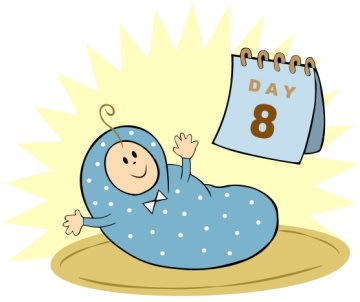In our parsha, HaShem tells Avram that the covenant between Him and the nation He will raise from Avram will be expressed in the circumcision of the males (Bereshit 17:10-11). The skin which is removed is known as the ORLA, and an uncircumcised individual is call an AREL. Let us examine the symbolism of this way of distinguishing the Jewish nation from the rest of mankind.
OPENING UP
The prophet Yirmiyahu compares the gentiles, who are ARELIM or uncircumcised, with the Jews who are ARELEI LEV uncircumcised of heart, meaning insensitive to suffering (Yirmiyahu 9:25). The statement is ironic, for the prophet is implying that it would be fitting for the circumcised of body to be circumcised of heart as well.
We may consider this a central message of MILA. While traditionally almost all non-Jewish men are uncircumcised, calling a non-Jew an AREL as a term of reproach is applied particularly towards individuals who are cruel and insensitive such as the wicked Goliath (Shmuel I 17:36).
The mishna in Nedarim states that “the circumcised” refers to Jews, even if they happen not to have had a circumcision. The MILA is not just a distinguishing act, it is considered to be a distinguishing quality. And what is the distinguishing quality of Jews as a nation? “This nation is distinguished by three characteristics: they are merciful, bashful, and perform acts of kindness” (Yevamot 79a) – that is, by emotional sensitivity and openness. These two distinguishing characteristics, the one physical and the other emotional, are closely related if we view the covering of the male organ as a symbol of a covering of the heart.
The choice of the male organ for this “superfluous” body part also fits in with this explanation. This organ is the instrument of union of man and wife, a union which ideally represents the fullest emotional and spiritual closeness two humans can acheive. Yet we are well aware that this very act can sometimes embody the exact opposite, the highest degree of exploitation of one person by another. It is precisely in the means of union between man and woman that the message of openness and sensitivity is most essential.
So displaying the covenant with the people of Avram through the sign of circumcision demonstrates that the distinguishing characteristic of the people of HaShem is meant to be their human sensitivity, as it was exemplified by Avraham who was a paradigm of lovingkindness.
NAMING THE CHILD
Traditionally, a boy is given a name at his circumcision. Even if the MILA is delayed due to health reasons, naming the child is also put off unless the hiatus is very long. A person’s name is part of his or her identity; waiting until the BRIT to give a name emphasizes that this child is forming his identity in the context of his membership in the Jewish people and in their historical covenant with HaShem.
This custom has a precedent in the first BRIT MILA, for it is during the establishment of this covenant that HaShem changes Avram’s name to Avraham.
Rabbi Asher Meir is the author of the book Meaning in Mitzvot, distributed by Feldheim. The book provides insights into the inner meaning of our daily practices, following the order of the 221 chapters of the Kitzur Shulchan Aruch.
The words of this author reflect his/her own opinions and do not necessarily represent the official position of the Orthodox Union.
